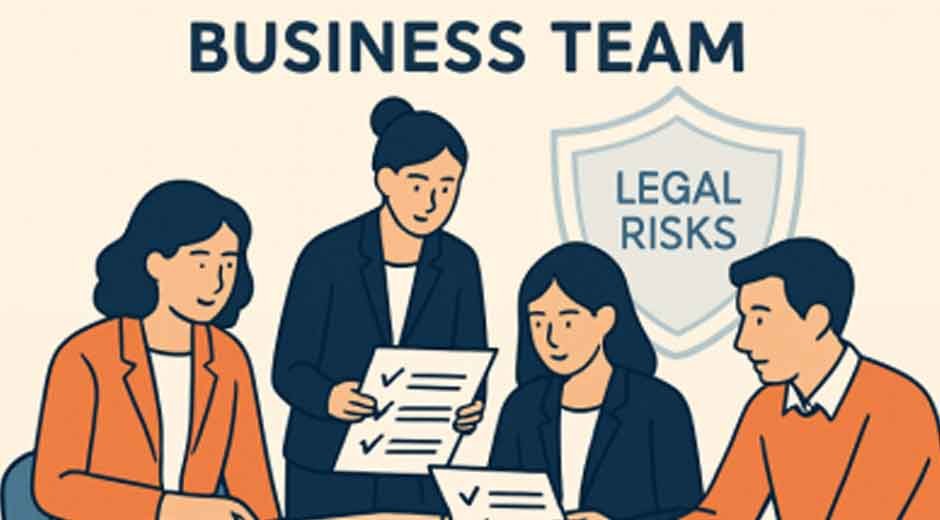Key Takeaways
- Routine legal audits uncover vulnerabilities and drive compliance improvements by helping businesses identify gaps before they become major liabilities.
- A strong commitment to data privacy safeguards both consumer trust and your company’s reputation, while also reducing the risk of costly regulatory penalties.
- Staying up to date with changes in employment law minimizes the likelihood of facing employee disputes, wage claims, or government investigations.
- Proactive contract management strengthens partnerships and protects against misunderstandings that might otherwise lead to business disruptions or legal action.
- Technology, when leveraged carefully and with oversight, enhances compliance efforts but can also introduce new risks if not regularly monitored and evaluated.
In an era marked by rapid technological advancements, shifting regulatory environments, and evolving business practices, proactive legal compliance has become more than just a box-ticking exercise—it is a critical and strategic necessity. Forward-thinking companies recognize that failing to address potential legal pitfalls does not just result in fines or lawsuits. Still, they can also lead to irreparable reputational harm and the loss of valuable business opportunities. By proactively adopting risk mitigation strategies and leveraging the knowledge and services of expert resources, such as Colorado business attorneys, organizations put themselves in a position to identify, address, and neutralize legal risks before they have a chance to escalate into larger and more costly challenges.
Legal risk management involves more than just compliance checklists; it’s about cultivating a culture of integrity across the organization. Navigating complex laws requires a holistic effort from leadership to frontline staff. A structured approach to compliance helps businesses prepare for regulation changes and build resilience, fostering innovation and growth. Proper risk strategies not only prevent penalties but also enable bold initiatives and quick adaptation to market needs. For small to midsize companies, establishing routines like legal checkups and external counsel builds simpler, more effective compliance. These steps help maintain agility, avoid disruptions, and protect stakeholder relationships.
Conduct Regular Legal Audits
Comprehensive legal audits are essential tools for organizations seeking to identify and mitigate potential risks across various aspects of their operations. A well-executed legal audit involves a thorough review of everything from contracts and employee handbooks to insurance policies, intellectual property portfolios, regulatory compliance files, and financial records. By formalizing and documenting this review process, companies ensure that no critical area is overlooked. Scheduling regular legal checkups—ideally on an annual or semi-annual basis—means businesses are less likely to be blindsided by new regulations, contract expirations, or inadvertent noncompliance. Organizations that conduct regular audits are often able to resolve disputes internally, well before they reach the litigation stage, which saves time, money, and reputation.
Implement Robust Data Privacy Measures
With new laws like the GDPR and CCPA reshaping expectations around personal data, the era of ignoring information security is over. Today’s consumers demand transparency about how their data is collected, shared, and protected, making data privacy a prerequisite for trust. Companies must adopt comprehensive privacy policies that outline exactly what data is gathered and for what purposes, along with technical safeguards such as encryption, regular vulnerability assessments, and secure storage solutions. Transparent communication about privacy practices, prompt breach notification procedures, and consistent staff training all ensure compliance stays on track. Regulators are focusing enforcement actions on organizations of every size, and violations can result in significant fines or legal actions that threaten viability—especially for smaller firms.
Stay Informed About Employment Laws
The world of employment law is notoriously fast-moving and complex. Regulations governing worker classification, wage and hour standards, occupational health and safety, employee benefits, and anti-discrimination guidelines are regularly updated at both state and federal levels. It’s not enough to set policies and hope for the best; companies must continually monitor changes, update internal processes, and ensure all employees receive frequent training. This is especially crucial, as trends such as automation, hybrid work, and digital tools introduce new compliance challenges surrounding topics like remote employee monitoring, record-keeping, and fair labor practices. An informed and up-to-date approach reduces the risk of fines, lawsuits, and reputational damage resulting from missteps in HR management.
Proactive Contract Management
Business relationships depend on clear, well-managed contracts. Vague or outdated agreements often cause disputes. Businesses should invest time in creating comprehensive, vetted contracts to minimize uncertainty. Regular reviews—whether conducted by a dedicated team or an automated system—help track obligations, renewal dates, and terms, thereby avoiding missed deadlines. Effective contract management minimizes interruptions, builds trust, and enhances transparency. Improving these processes allows better cash flow control, legal protection, and stronger negotiation power. Best practices include centralizing contracts in secure digital storage, setting automatic renewal reminders, and involving legal experts early in the negotiation and review process.
Leverage Technology with Caution
Technological innovation has introduced powerful new tools for risk management, such as automated document workflows, digital signatures, AI-driven contract analysis, and compliance tracking software. However, embracing these advances requires vigilance. Overreliance on technology, or failing to audit these systems periodically, can expose organizations to new risks, such as algorithmic bias, data breaches, or inadvertent regulatory violations. Effective risk management involves regular technology audits, well-documented internal procedures, and human oversight to ensure automation enhances—rather than replaces—judgment. As discussed by the American Bar Association, organizations that strike a balance between innovative technology adoption and careful oversight tend to experience fewer compliance mishaps and enjoy longer-lasting competitive advantages.
Foster a Culture of Transparency
More than any single policy or process, a company’s culture determines how effectively it navigates legal risks. Transparent communication about objectives, standards, and policies fosters an environment where employees are clear about what is expected and feel empowered to raise concerns early, before they become serious problems. Leaders who consistently model integrity and support open dialogue send a powerful message that the organization values accountability and adherence to the law. Studies show that organizations with strong cultures of transparency are not only better at avoiding regulatory penalties but also demonstrate greater adaptability and resilience when facing audits, investigations, or crises.
Engage Legal Professionals
While preventative measures go a long way, there is no substitute for having reliable legal guidance. Access to skilled business attorneys is invaluable for both handling unexpected situations and designing proactive compliance frameworks tailored to your specific industry or market. Experienced legal professionals can help decode complex regulatory requirements, negotiate favorable contracts, develop policies that withstand scrutiny, and alert you to potential risks before they escalate. Building an ongoing relationship with legal experts ensures that your compliance programs keep pace with evolving laws and best practices—giving you a critical edge in an ever-changing regulatory landscape.
Conclusion
Staying ahead of legal risks is not a one-off task—it is an ongoing, organization-wide effort. By conducting routine legal audits, prioritizing and investing in data privacy, staying up-to-date with employment regulations, managing contracts with care, utilizing technology wisely, promoting transparency, and seeking professional legal advice, businesses can position themselves not just to survive but to thrive in an increasingly regulated marketplace. Companies that treat legal risk management as a strategic asset—rather than a reactive burden—are far better prepared for uncertainty and poised for long-term success.










